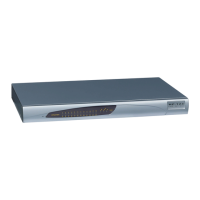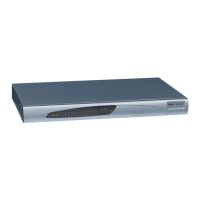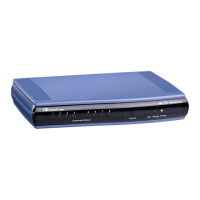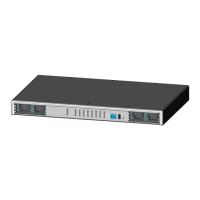Version 7.2 483 Mediant 1000B Gateway & E-SBC
User's Manual 23. Routing
Parameter Description
other index entries even if the destination is unavailable and
alternative routing is enabled. This is because the subsequent
index entries are defined with a Forking Group number that is
lower than that of index entry 1.
Table index entry 1 is defined with Forking Group "1", index
entry 2 with Forking Group "2", and index entries 3 and 4 with
Forking Group "1": The device first sends the call according to
index entries 1, 3, and 4 (all belonging to Forking Group "1"),
and if the destination is unavailable and alternative routing is
enabled, the device sends the call according to index entry 2.
Table index entry 1 is defined with Forking Group "1", index
entry 2 with Forking Group "3", index entry 3 with Forking
Group "2", and index entry 4 with Forking Group "1": The
device first sends the call according to index entries 1 and 4
(all belonging to Forking Group "1"), and if the destination is
unavailable and alternative routing is enabled, the device
sends the call according to index entry 2 (Forking Group "3").
Even if index entry 2 is unavailable and alternative routing is
enabled, the device ignores index entry 3 because it belongs
to a Forking Group that is lower than index entry 2.
Note:
To enable Tel-to-IP call forking, set the 'Tel2IP Call Forking
Mode' (Tel2IPCallForkingMode) parameter to Enable.
You can configure the device to immediately send the INVITE
message to the first member of the Forking Group (as in
normal operation) and then only after a user-defined interval,
send the INVITE messages simultaneously to the other
members. If the device receives a SIP 4xx or 5xx in response
to the first INVITE, it immediately sends INVITEs to all the
other members, regardless of the interval. To configure this
feature, see the ForkingDelayTimeForInvite ini file parameter.
You can implement Forking Groups when the destination is an
LDAP server or a domain name using DNS. In such scenarios,
the INVITE is sent to all the queried LDAP or resolved IP
addresses, respectively. You can also use LDAP routing rules
with standard routing rules for Forking Groups.
When the UseDifferentRTPportAfterHold parameter is
enabled, every forked call is sent with a different RTP port.
Thus, ensure that the device has sufficient available RTP ports
for these forked calls.
Cost Group
cost-group-id
[PREFIX_CostGroup]
Assigns a Cost Group to the routing rule for determining the cost
of the call (i.e., Least Cost Routing or LCR).
By default, no value is defined.
To configure Cost Groups, see ''Configuring Cost Groups'' on
page 260.
Note: To implement LCR and its Cost Groups, you must enable
LCR
To implement LCR and its Cost Groups, the Routing Policy
must be enabled for LCR (see ''Configuring a Gateway
Routing Policy Rule'' on page 489). If LCR is disabled, the
device ignores the parameter.
The Routing Policy also determines whether matched routing

